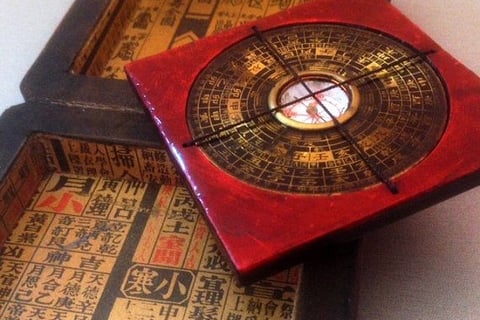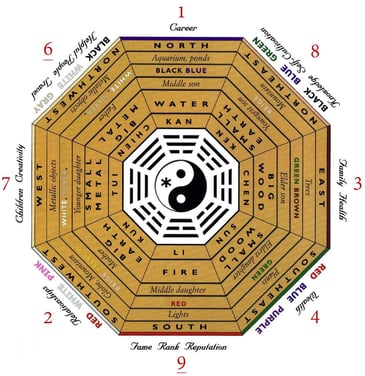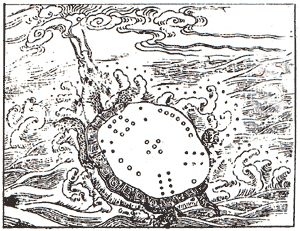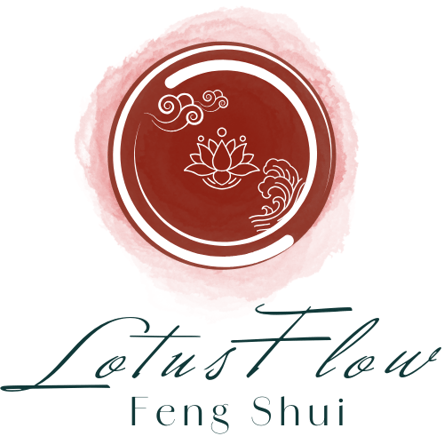
History and basic principles
Feng Shui is an ancient Chinese practice to remedy the living or working space, to bring harmony and abundance to the main aspects of someone's life or business, using the fundamental Universal laws of nature.
Feng shui, which translates from Chinese as "wind, water" 風水, has been a part of the Chinese culture for thousands of years. Believed to be dating back to 5000 years ago, this practice has been shrouded in secrecy and mysticism. The use of the term Feng shui did not appear until the early 4th century in China. It was taken from the Book of Burial by feng shui master Guo Pu (276 A.D.-324 A.D.). The book states:
“Qi rides with the wind (feng),
is dissipated by the wind, and is confined by water (shui).
Hence, the ancient people sought places where qi collected
and did not dissipate, where its momentum was held by water.
This is why this knowledge and practice is called feng shui.”
According to Feng shui, the most fundamental universal law is that everything is made of Qi, which is life force energy or cosmic energy. And thus, for us to live a healthy and successful life, we should live in accordance with those laws. One of the beliefs in Feng Shui is that when the roof of a building is finished, we cut the connection between heaven and earth, creating a space where positive and negative energies become imprinted. These energies have the potential to impact our opportunities for prosperity, abundance, harmonious relationships in the home, sleep quality, and even our overall health and well-being. By understanding and balancing the energies in the building, individuals can create a living environment that promotes positive energy and supports their overall well-being.
In the family home, good Feng Shui positioning creates harmonious relationships between the family members, fosters good health, attracts abundance and prosperity, and helps to build good reputations. In contrast, bad Feng Shui might bring illness, disaster, accidents, and financial loss. Bad Feng Shui causes opportunities to slip away, careers to fade, wealth to be squandered and reputations to collapse.
In business, good Feng Shui can bring prosperity, wealth and a good reputation, attract more opportunities, it also can enhance harmonious relationships between the employees working in that space. A well-balanced space can support the productivity and creativity of the whole team.


Main Schools
As with many ancient practices, Feng Shui has branched into several schools. The analyses of your house/property or business will be based on the most ancient Traditional Feng Shui Schools: which are the Form, Compass schools and the most advanced Flying Stars school.
Form School- it is the predecessor of the rest of the schools in Feng Shui. Initially, it was used to find the most suitable place for the imperial tombs, as it was believed that burying the ancestors in a good site could have a direct effect on the fortune of their successors. Finding the most favourable site was based on a thorough analysis of the land, its contours, mountain ranges and location of water. These practices were later developed to find the best location for cities and later on, houses and buildings' positioning depending on the landforms and surroundings. And to this day these fundamental principles can be applied in any modern space. It focuses on assessing qi energy from the form of the landscape pattern as well as the form of man-made buildings.
The ancient Chinese masters recognised Matter, Qi Energy, and Information in all things. This is shown in the statement of the Feng Shui classic, The Book of the Blue Sack:
“Li embedded in Qi and Qi embedded in Form”.
In this statement, Li is equivalent to Information, Qi is equivalent to Qi energy, and Form is equivalent to Matter.
This way, we can interpret that "Information is embedded in Qi Energy, and Qi Energy is embedded in matter; or, Form defines Energy, and Energy manifests Information."


Compass school- the roots of this school stem from the I Ching (The Book of Changes). It is the oldest classical texts used in Asia and is the foundation of Confucianism, Taoism, Traditional Chinese medicine, Astrology, Numerology, Mathematics and Philosophy. It is said to hold the secrets of the Universe and the laws and forces which govern nature.
While Forms School focuses on the physical landscape configuration of the environment, Compass School focuses on assessing the abstract energies that cannot be seen with the naked eye.
Compass school Feng shui is a multifaceted practice with various subsets. It can be categorized into yang house and yin house, each serving different purposes. Yang house pertains to the living spaces of people, while yin house relates to the burial grounds of the deceased. The techniques and applications utilized for each type differ significantly. The most prominent formulaic methods employed for yang house are flying stars and eight mansion feng shui. These methods are highly influential and widely used in the practice of compass school feng shui.
Both of the above-mentioned schools are based on formulaic calculations to understand how qi influences you and your home, rather than relying on physical landforms. This approach makes it a dynamic practice with short-term and long-term effects, as the quality of qi changes with time. As a result, the feng shui fortune of a house continuously changes over time. The house is divided into 8 sectors, each corresponding to a compass direction. This approach allows for a more comprehensive understanding of how qi flows through a space and how it can be harnessed for positive energy. Each sector represents an aspect of one's life, a person in the family, a certain body part and organ, supported by one of the five elements: Fire, Earth, Metal, Water, and Wood.
All formulaic systems are also based on direction, which incorporates the use of a Feng Shui compass known as the Luo Pan.
It is important to emphasize that Forms and Compass Schools are not necessarily two separate schools; rather, they should be viewed as two aspects of Feng Shui – one relates to the physical formations of the surroundings, and the other refers to the abstract, invisible influences affected by time and space (directions).


Flying Star school or is one of the most traditional Chinese Feng Shui practices and is based partially on numerology which is the ‘language’ of the universe. It is also considered superior to the other schools due to the fact it considers the influence of time and direction on a building. Flying Star is believed to be the most complex, accurate and powerful form of Feng Shui and looks at the distribution of energy inside a building which will determine if the occupants prosper in relation to their wealth, health, and relationships. It is important to mention that Form school be used in conjunction with Flying Star school otherwise the analysis is believed not to be complete.
A practitioner would use the facing direction to calculate the location of the flying stars (the quality of the energies in your home), with its resultant sitting and facing stars influencing health/relationship and wealth/officialdom respectively. The idea is to use the facing direction and its subsequent correlations of the eight Trigrams in the eight directions, to calculate how the house would face the Heaven Qi and whether a particular direction is auspicious or harmful from a health and wealth perspective.




